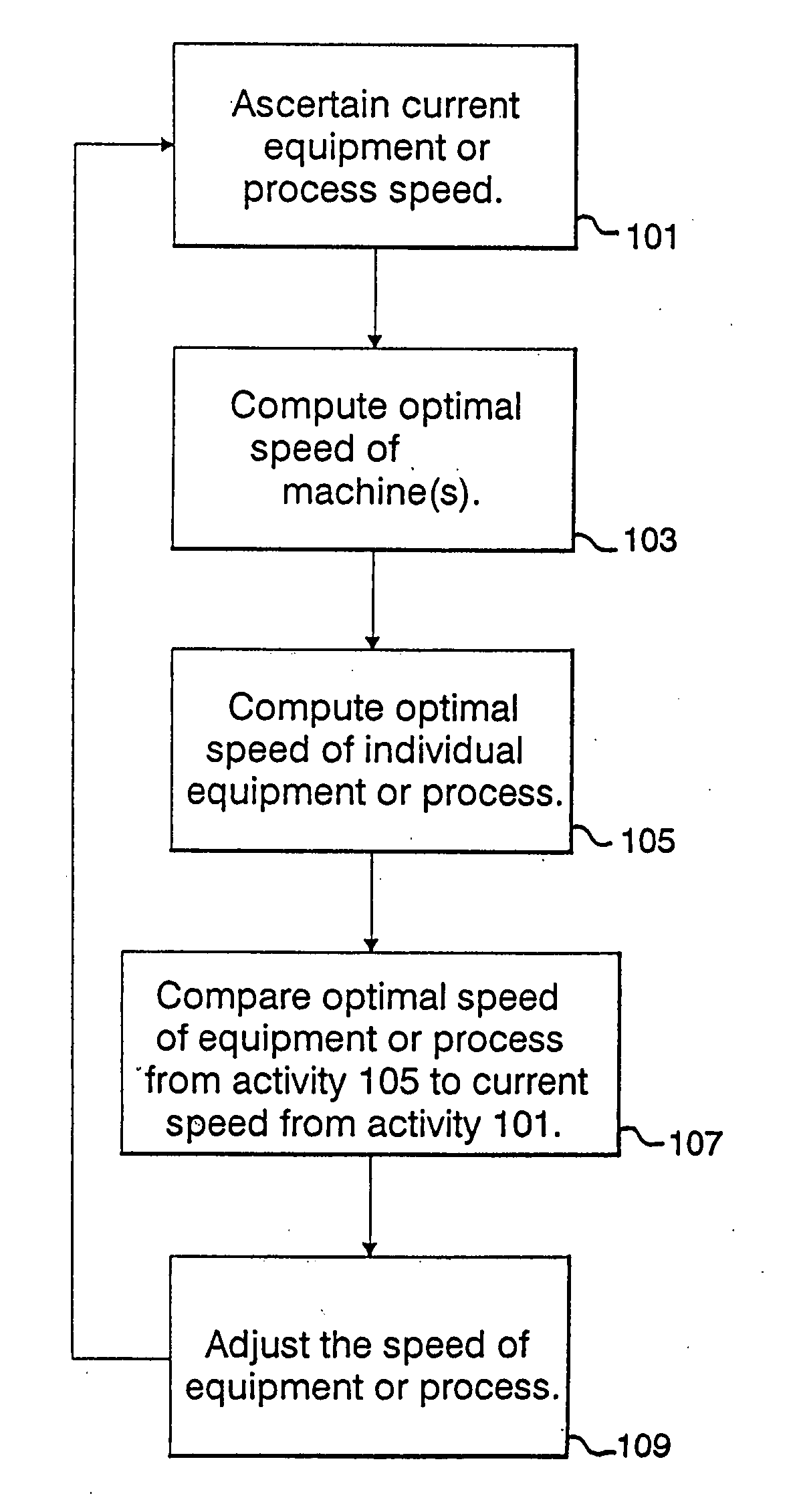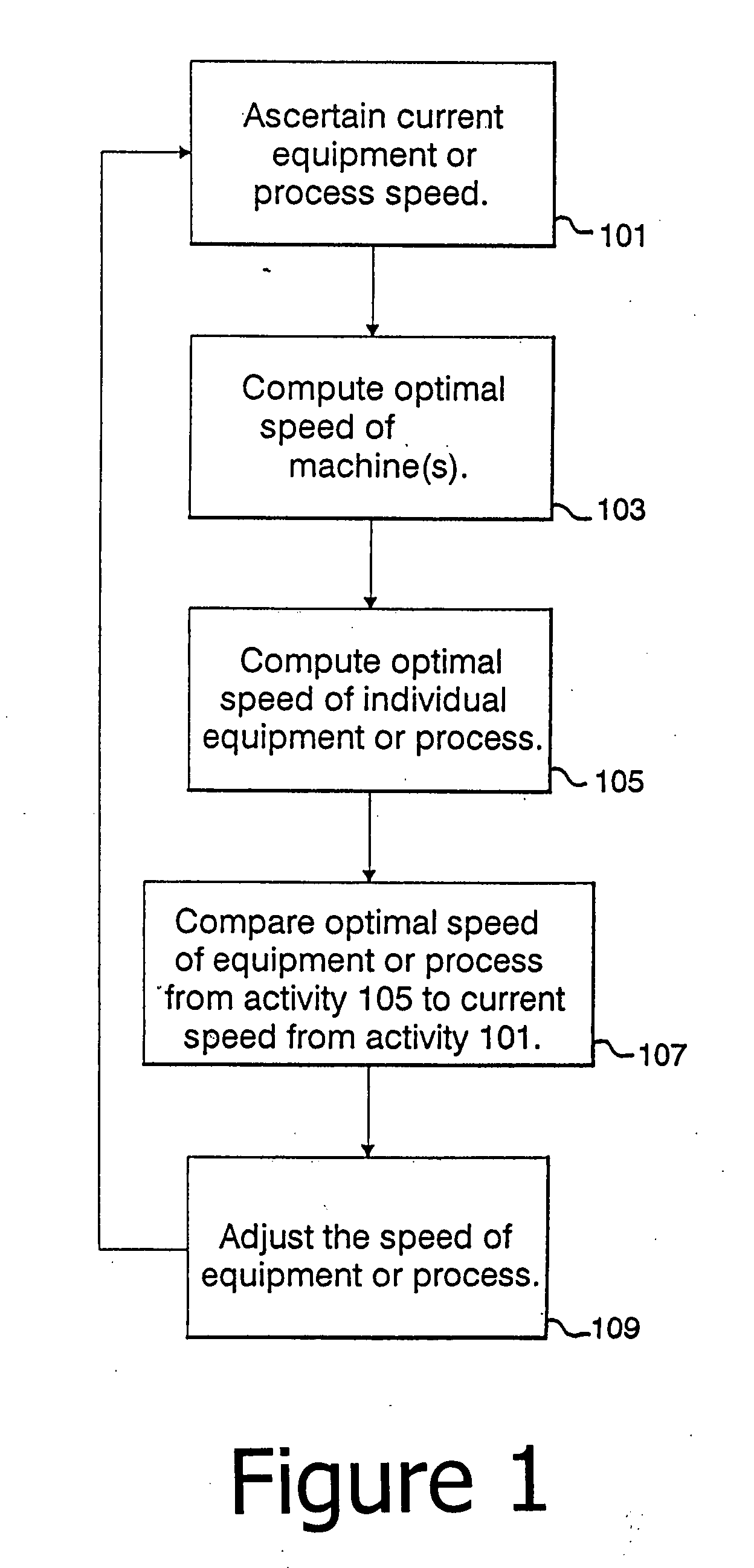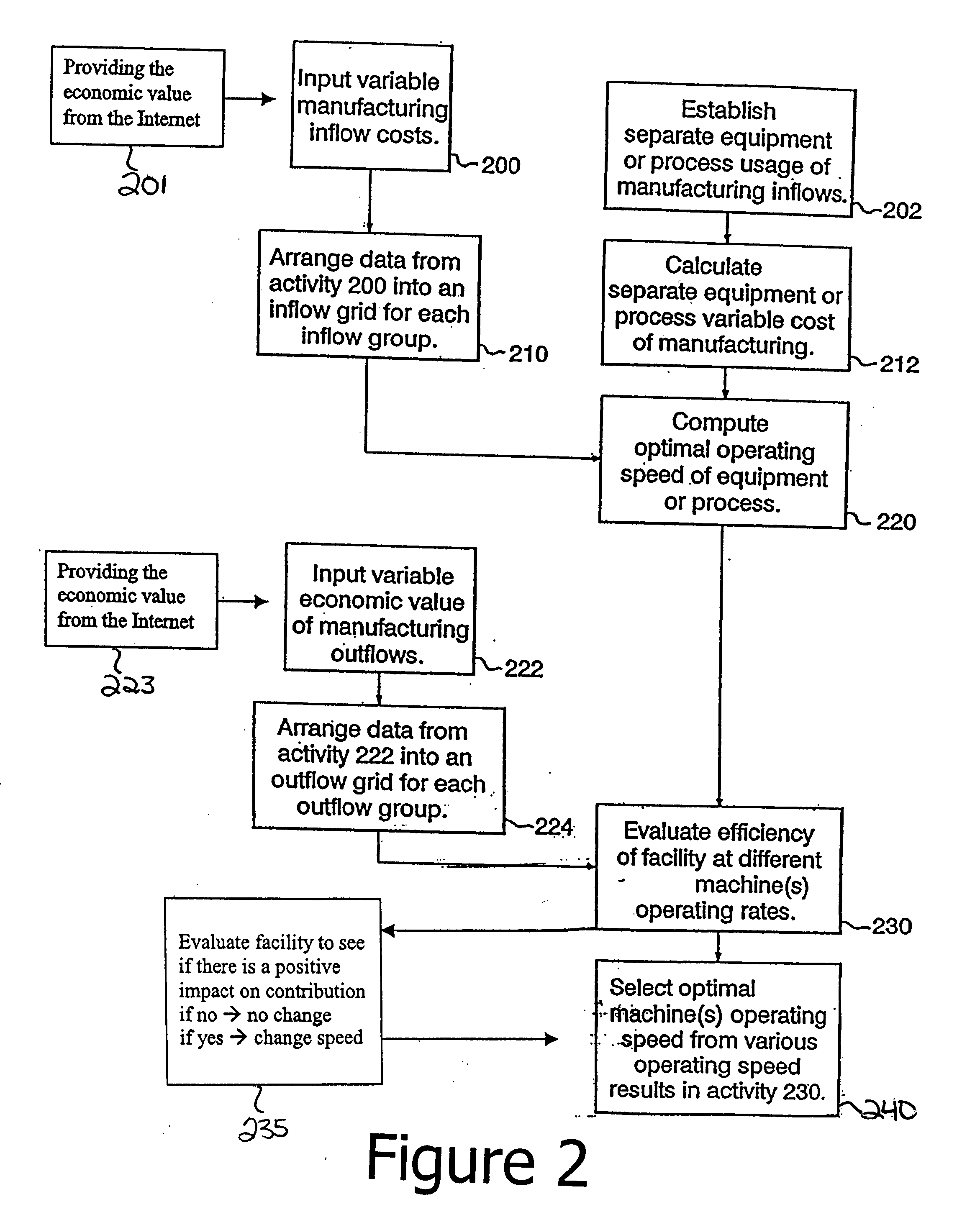Method and apparatus for analyzing the variable operating rate of a manufacturing process
a manufacturing process and variable operating rate technology, applied in the field of methods and apparatus for analyzing the variable operating rate of a manufacturing process, can solve the problems of no automated control system that currently controls the operating speed, the selected speed may be considerably far from the optimal operating speed, and the speed might be less desirable. to achieve the effect of maximizing profitability
- Summary
- Abstract
- Description
- Claims
- Application Information
AI Technical Summary
Benefits of technology
Problems solved by technology
Method used
Image
Examples
Embodiment Construction
[0053]The present invention is, in one embodiment, a method and apparatus for an integrated control system in a manufacturing facility, or computer program implementing the system, that establishes and implements an optimal operating speed for equipment or processes that enhances the efficiency of the entire activity involved in a manufacturing facility. The present invention can be utilized in a number of manufacturing businesses, particularly process manufacturing, such as steel (and the production of other metals), petroleum and energy. The use of a papermaking facility example in the description is not meant to limit the scope of the invention to the paper industry.
[0054]The use of the term manufacturing facility in this application shall include any manufacturing plant, any single piece of equipment or process, or groups of equipment or processes that includes a manufacturing activity for the manufacture of a product. The use of the term also could include groups of facilities,...
PUM
 Login to View More
Login to View More Abstract
Description
Claims
Application Information
 Login to View More
Login to View More - R&D
- Intellectual Property
- Life Sciences
- Materials
- Tech Scout
- Unparalleled Data Quality
- Higher Quality Content
- 60% Fewer Hallucinations
Browse by: Latest US Patents, China's latest patents, Technical Efficacy Thesaurus, Application Domain, Technology Topic, Popular Technical Reports.
© 2025 PatSnap. All rights reserved.Legal|Privacy policy|Modern Slavery Act Transparency Statement|Sitemap|About US| Contact US: help@patsnap.com



